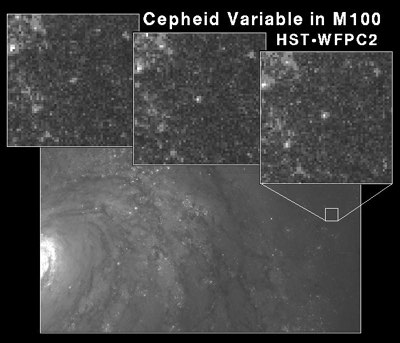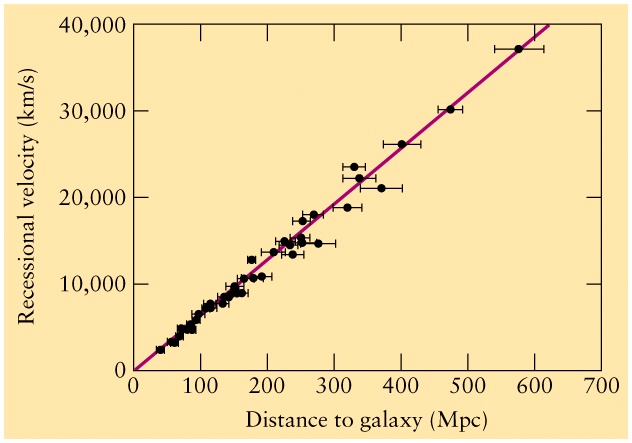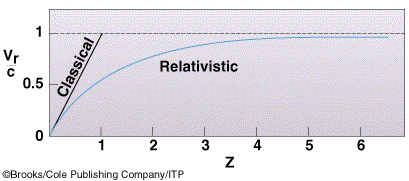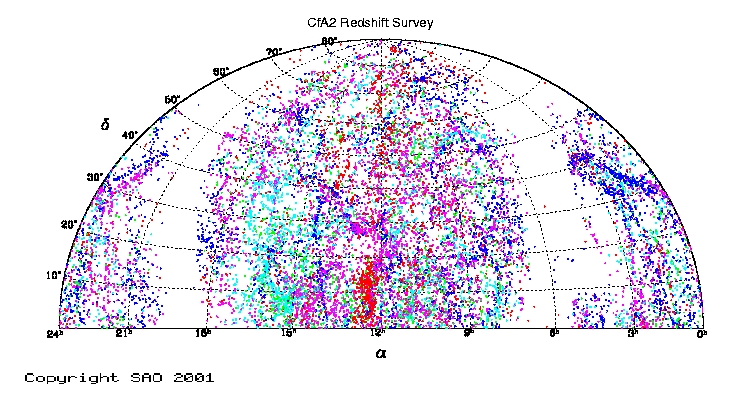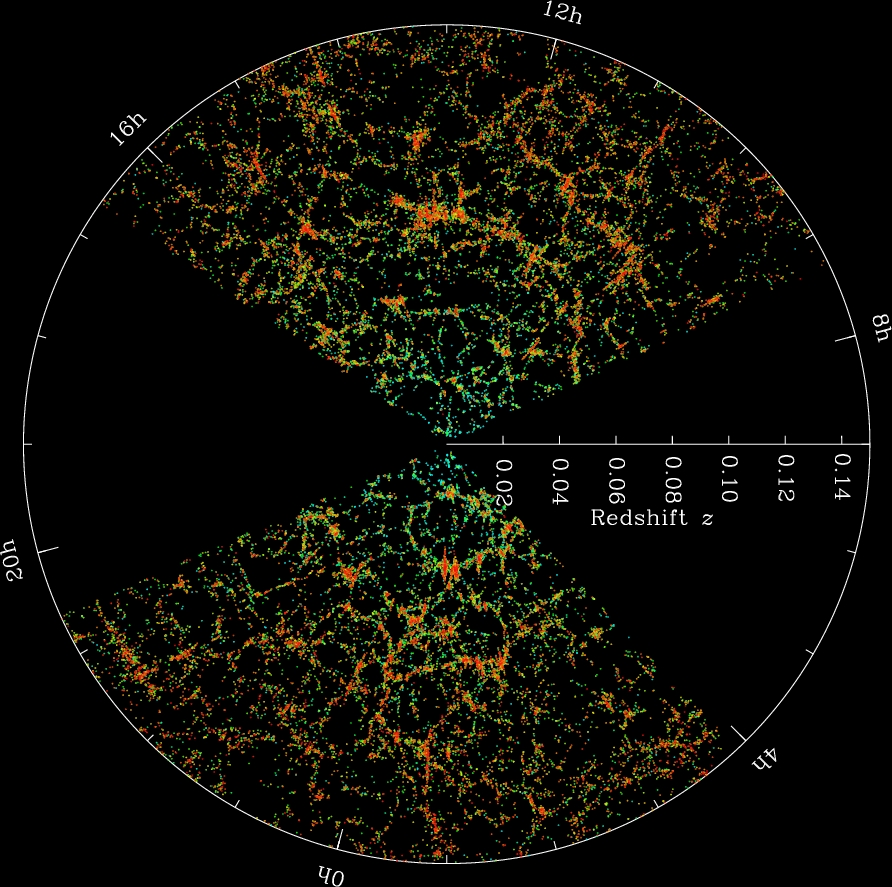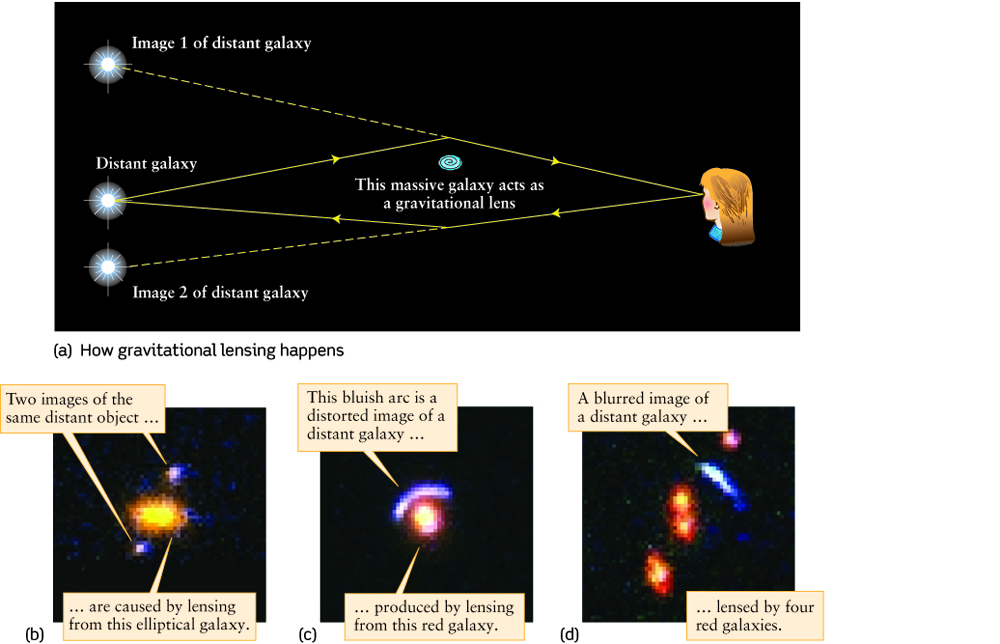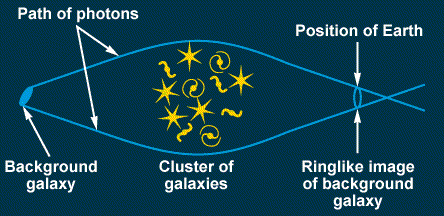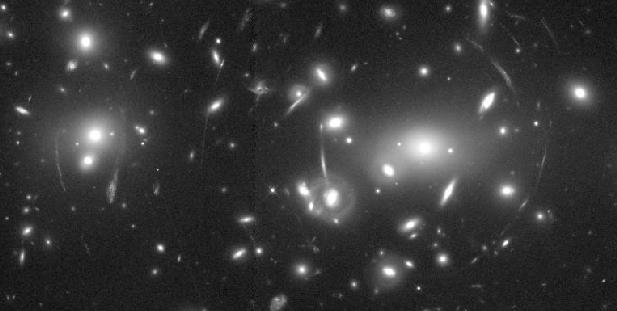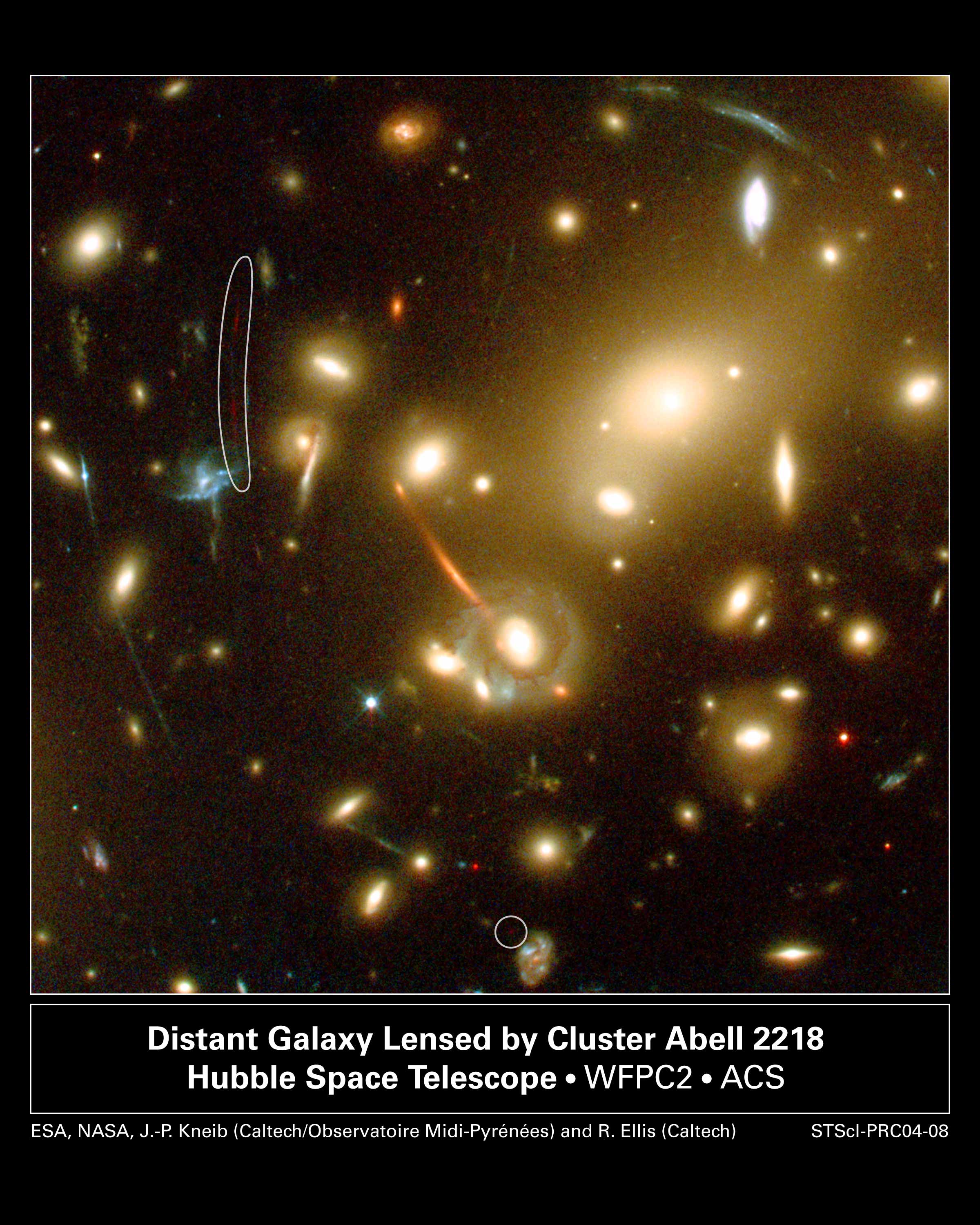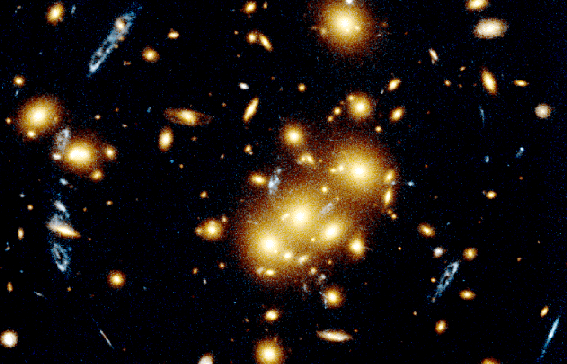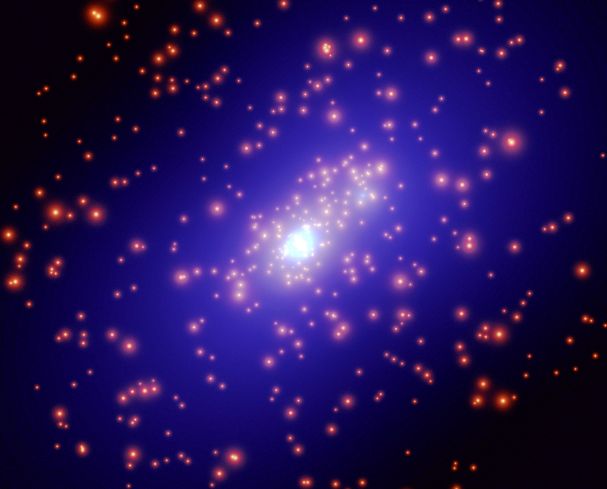The Einstein Ring
- If there is a perfect alignment between the source,
lens and the observer, the image of the source looks like
a ring.
- This ring is called an Einstein Ring
- The angular radius of the ring depends on the distance to
the lens (d) and the mass of the lens (M):
angular radius = (2GM/(dc2))1/2
- If our telescope can't resolve the small angular size
of the Einstein Ring, we just see the image's brightness
increase. This is called microlensing.
- By examining the image, it is possible to find the
mass of the lensing object.
- The bright central region is a nearby galaxy, whose
mass acts as a lens for the further away galaxy.
- The image of the far-away galaxy is distorted
into a ring shape.
|
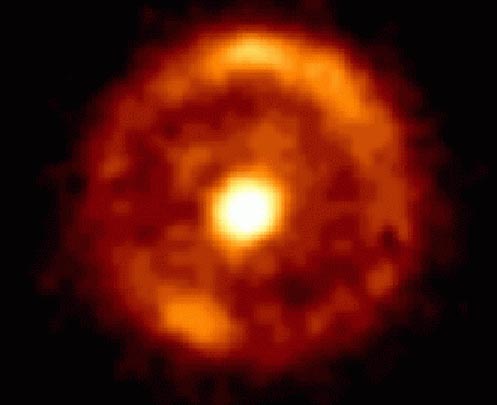
|
